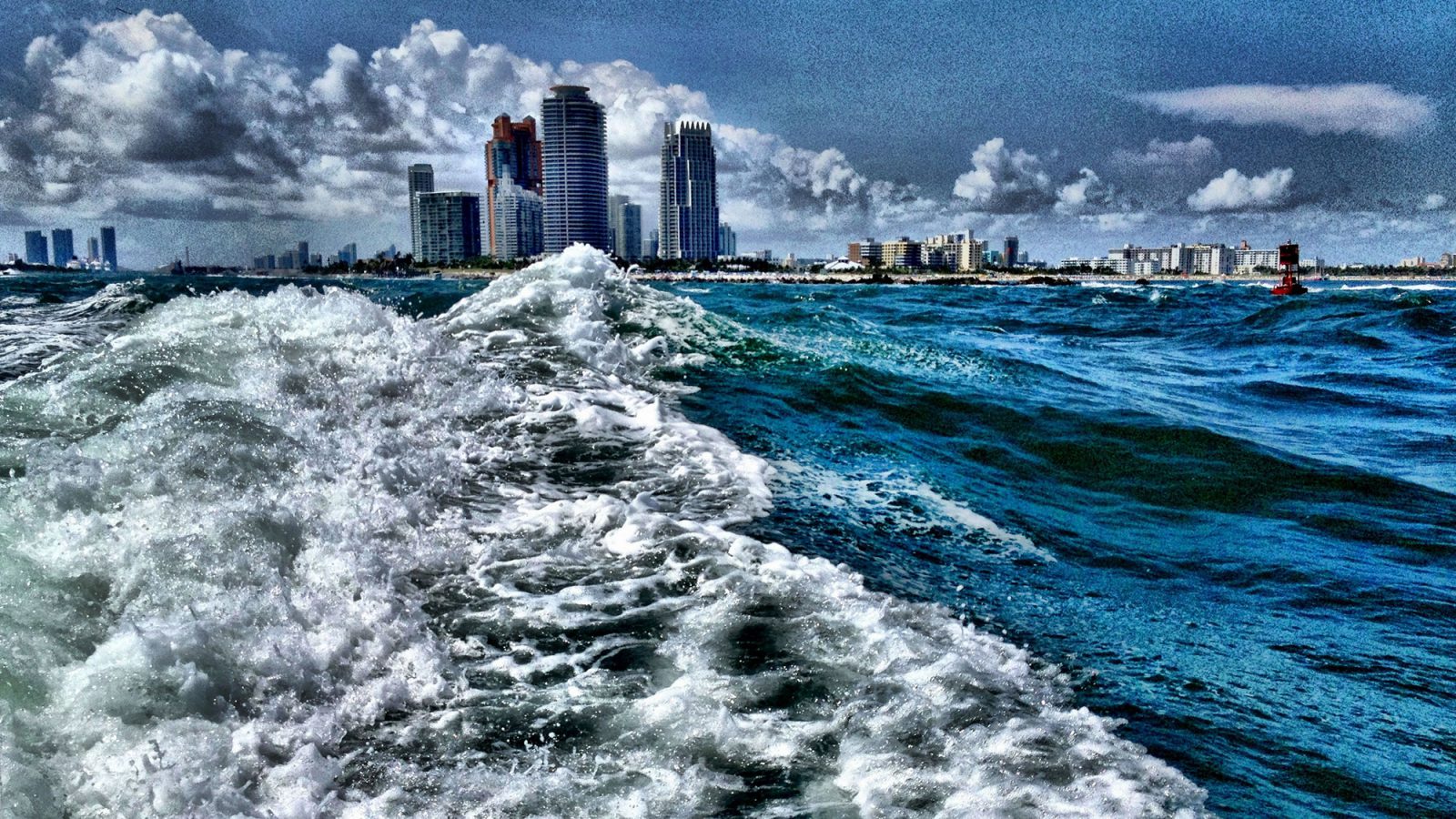Harold “Hal” Wanless is a wizened walrus of a man who presides over the University of Miami’s geology department from a fluorescent-lit basement at the north end of campus. His walls are decorated with photos taken on research trips over the years — glaciers grinding through the northern mountains, a wooden boat hauled up on the tundra — and a map of Greenland, where he trekked last summer to get a look at the melting ice for himself.
Wanless, with his gray mustache and wire-rimmed glasses, is known hereabouts as the go-to man for predictions of doom. He’s been sounding the alarm about melting ice sheets and rising seas for years, and does not mince words when it comes to what he believes is the only sane response for residents of South Florida.
“There’s a lot of silly dreaming about how we’re going to handle this,” he told me during a recent visit to the walrus cave. “We’re going to handle this by relocating.”
Until recently, many people rolled their eyes at comments like this. But as rising seas have begun to flood the streets of nearby Miami Beach, and sea-level rise has consistently outpaced more cautious predictions, folks have begun to take Wanless more seriously.
“Nobody wants to cry wolf. Nobody wants to overestimate the problem,” Wanless says. “But our [climate] models are incapable of keeping up with what’s happening.”

Hal Wanless.
To get your head around what Wanless is talking about, it helps to have a little background on the study of sea levels. Any scientist worth her saltwater (sorry) will tell you that as the climate warms, the oceans are going to rise. It’s not rocket science: When the seas heat up, they expand, and when ice sheets and glaciers melt, they add more water to the mix. In the last century, sea levels have risen roughly seven inches globally, and the rate of rise is increasing.
Predicting how quickly the oceans will rise in the future actually is a little like rocket science, however. Scientists who make this their business largely fall into two camps: Those who use physical models — that is, models that try to predict sea-level rise by calculating rates of water expansion and ice melt and such — and those who use “semi-empirical” models, meaning that they look for evidence of how high the seas were in comparable periods in the past, and then make predictions based on that. (German oceanographer Stefan Rahmstorf, one of the field’s top stars, explains these methods in detail in this handy post.)
Physical models are considered the most conservative scientific approach. So far, they have not kept pace with the actual sea-level rise, as Wanless points out, but they limit the variables involved to things that can be (relatively) easily quantified. In its most recent report, the Intergovernmental Panel on Climate Change leans heavily on physical models and predicts that, if we continue polluting the way we’ve been, the seas will rise between 1.7 and 3.2 feet by 2100.
The numbers are a significant increase from the IPCC’s previous estimates, from 2007, but most climate scientists will tell you that they are still too low. A survey of sea-level scientists published last month found that most experts believe the IPCC’s worst-case estimate is actually about the best we can expect if we aggressively cut greenhouse gas emissions starting now. Failing that (and we’re failing!), they said, we can expect 2.3 to 4 feet of rise by 2100, and 6.5 to 9.8 feet by 2300.
Some scientists believe that we could get even wetter. Climate crusader (and former head of the NASA Goddard Institute for Space Studies) James Hansen has been warning for several years about feedback loops such as methane released from melting permafrost; these feedback loops could cause ice melt — and sea-level rise — to dramatically speed up over time, conceivably raising the oceans by 16 feet by the end of the century.
Wanless says the geological record supports this kind of scenario: Sediment records from the continental shelves show that, in the past, sea levels haven’t risen at a steady, leisurely pace. Instead, they’ve made big leaps, surging 3.3 to 33 feet within a century or a century and a half. And in the past, the seas haven’t had us pushing them along.
“We are severely altering the atmosphere,” Wanless told me. “To think that we are going to have a gradual rise in sea level is ludicrous.”
But the debate about whether we’ll see three or six or 16 feet of rise by the century’s end is largely an academic one. Even the best-case scenarios put denizens of coastal cities up over their hip waders within just a few generations.
To get a sense of what this could look like in Miami, check out this video, created using data provided by the nonprofit research organization Climate Central. You’ll notice that in addition to the coastal flooding, inland areas are also submerged. This isn’t a mapmaker’s mistake; as I wrote in my last post, Miami is built on porous limestone, so water will seep into low-lying areas underground.
“With two feet of sea-level rise, we lose our fresh drinking water,” Wanless says. “Four feet, and our airport is compromised. Five to six feet, and the port is gone.”
A paper published last summer in the journal Nature Climate Change found Miami to be the most at-risk city in the country; today, the city risks suffering an average of $672 million in flood damage each year.
But don’t think that the Magic City is alone in this. Greater New York isn’t far behind, with $628 million annually, on average. New Orleans stands to lose $507 million annually, Boston $237 million, and Vancouver, B.C., $107 million. The study looked at the world’s 136 largest cities and found that total average annual flood losses are approximately $6 billion per year. By mid-century, if we fail to beef up our climate defenses, that number could top $1 trillion.
Meanwhile, scientists studying the Pliocene epoch, which had a similar climate to the one we’re creating for ourselves, have found ancient beaches up to 295 feet above the current sea level. (The New York Times recently ran a great story about these intrepid researchers.) No one is predicting that kind of Waterworld-like deluge in the near future, but we haven’t even talked about storms. What happens when you add even 1.7 feet of water to the Atlantic Ocean and then throw a hurricane into the Hobart with it?
I’ll talk about that in my next post.



